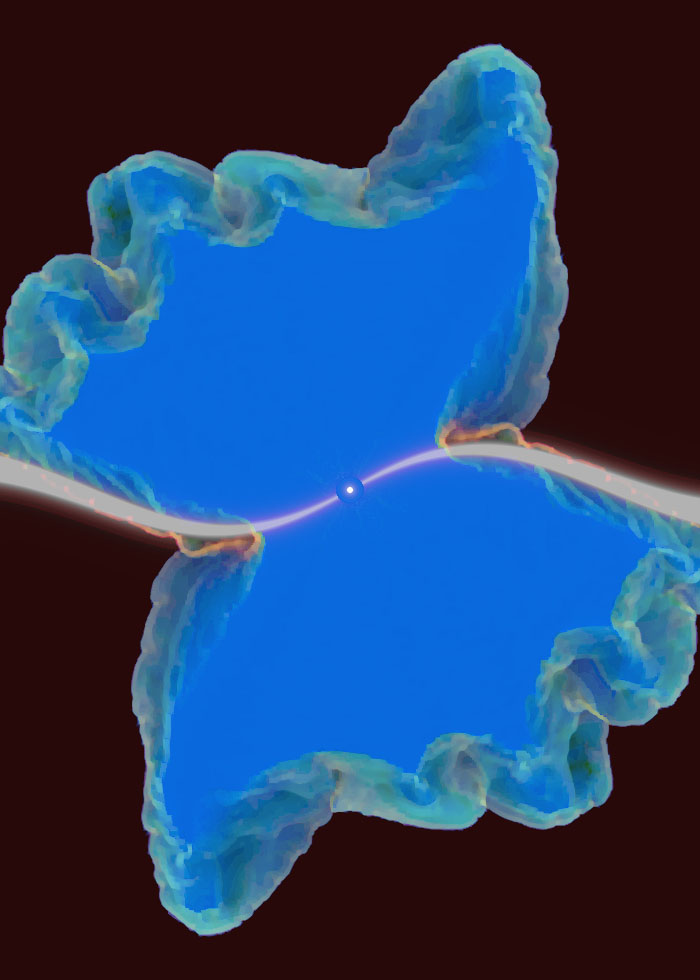 |
| Messier 57 Ring Nebula by Hubble Space Telescope "M57 The Ring Nebula" by The Hubble Heritage Team (AURA/STScI/NASA) Licensed under Public Domain via Commons |
 |
| "Antoine Darquier de Pellepoix" by G. Vidal Licensed under Public Domain via Commons |
- The central star is a white dwarf with a temperature of 120,000 Kelvin.
- The outer part of the nebula appears red in photographs because of emission from ionized hydrogen.
- The middle region is colored green; doubly ionized oxygen emits greenish-blue light.
- The hottest region, closest to the central star, appears blue because of emission from helium.
 |
| Location of M57 Sky map Wikimedia |
Planetary nebulae
 |
| Computer simulation of the formation of a planetary nebula from a star with a warped disk, showing the complexity which can result from a small initial asymmetry. Credit: Vincent Icke Huygens Laboratory, Leiden University, Netherlands Licensed under CC BY-SA 3.0 via Commons |
A planetary nebula is a kind of emission nebula consisting of an expanding glowing shell of ionized gas ejected from old red giant stars late in their lives. They are a relatively short-lived phenomenon, lasting a few tens of thousands of years, compared to a typical stellar lifetime of several billion years.
At the end of the star's life, during the red giant phase, the outer layers of the star are expelled by strong stellar winds. Eventually, after most of the red giant's atmosphere is dissipated, the exposed hot, luminous core emits ultraviolet radiation to ionize the ejected outer layers of the star. Absorbed ultraviolet light energises the shell of nebulous gas around the central star, appearing as a bright coloured planetary nebula at several discrete visible wavelengths.
Planetary nebulae may play a crucial role in the chemical evolution of the Milky Way, returning material to the interstellar medium from stars where elements, the products of nucleosynthesis (such as carbon, nitrogen, oxygen and neon), have been created.
Planetary nebulae are also observed in more distant galaxies, yielding useful information about their chemical abundances.
In recent years, Hubble Space Telescope images have revealed many planetary nebulae to have extremely complex and varied morphologies. About one-fifth are roughly spherical, but the majority are not spherically symmetric. The mechanisms which produce such a wide variety of shapes and features are not yet well understood, but binary central stars, stellar winds and magnetic fields may play a role.
Wikipedia
___________
Click on the links provided for detailed discussions on the subjects and for references.
No comments:
Post a Comment